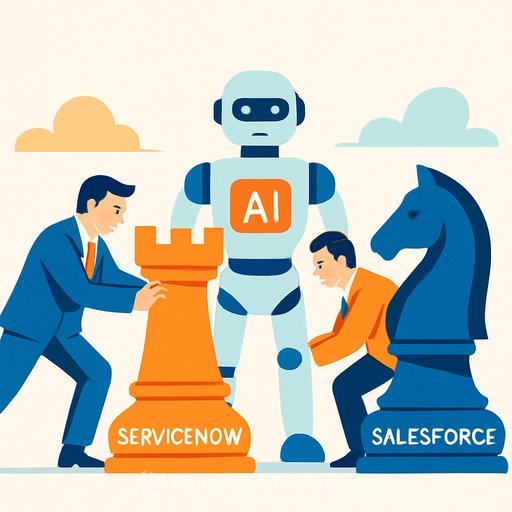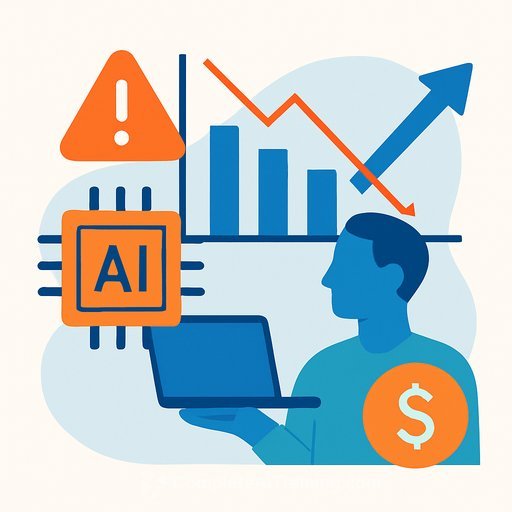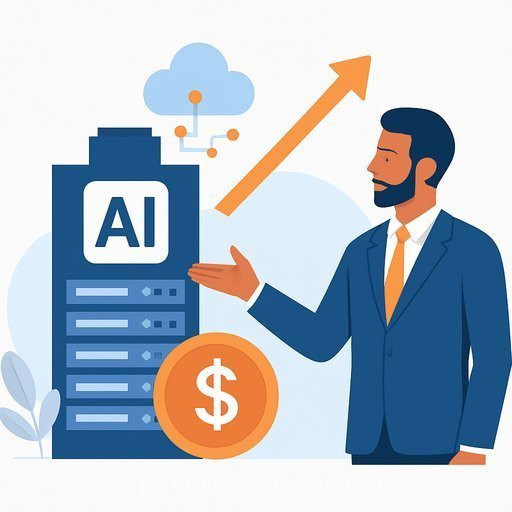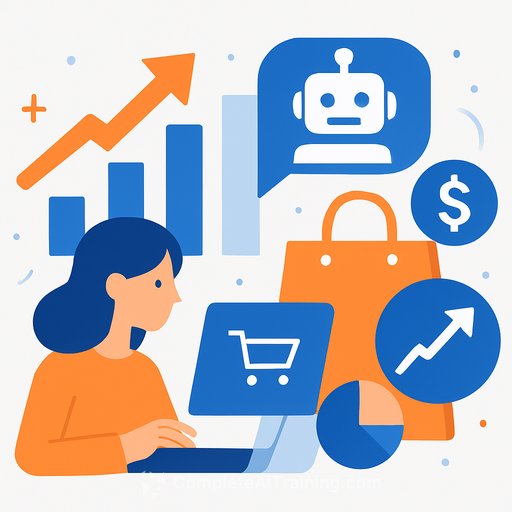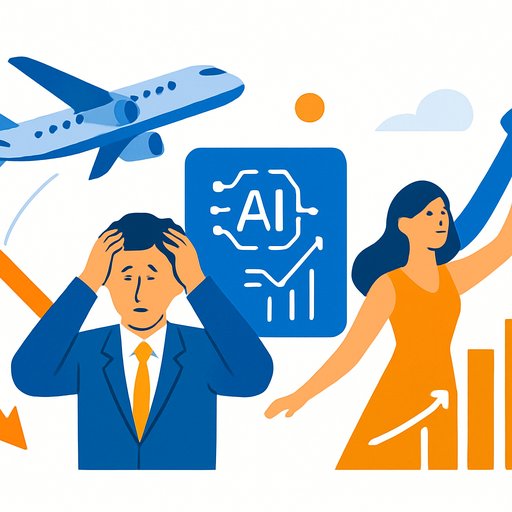Salesforce's Dual Bet on Humans and AI: What It Means for Sales Teams
Salesforce is doubling down on human sellers while pushing AI deeper into the stack. Marc Benioff says face-to-face communication is still essential, even as the company deploys agents that handle up to 50% of customer interactions.
The proof is in the headcount. Salesforce hired 3,000-5,000 salespeople after cutting roughly 4,000 roles in service and support-savings created by AI doing 30%-50% of the work in those functions.
The signal behind the headlines
AI isn't replacing sales. It's clearing the runway for more human selling time and bigger deal flow.
Salesforce's Agentforce strategy pairs autonomous agents with reps, but adoption lags innovation. Many enterprises are cautious, delaying full automation while they figure out integration, risk, and trust.
Internally, Salesforce reduced support from 9,000 to 5,000, then redirected the gain into sales capacity. Early adopters like Pepsi and FedEx are already testing autonomous agents inside their workflows.
What this means for your sales strategy
- Let AI handle first-touch, research, and routing. Keep humans on discovery, consensus building, and closing.
- Design a clear escalation path: when the agent hits a confidence threshold or a multi-stakeholder scenario, it hands off to a rep.
- Invest in AI-literate sales ops: prompt libraries, playbooks, QA, and compliance reviews.
- Tie AI use to pipeline quality and cycle time, not vanity metrics.
A practical playbook you can run this quarter
- Prospecting: Agents scrape signals, score accounts, and draft first outreach. Reps finalize messaging.
- Prep: Agents compile org charts, tech stacks, and risk flags. Reps map politics and next steps.
- Meetings: AI generates agendas and captures notes. Reps drive business cases and objections.
- Follow-up: Agents send summaries, schedule next calls, and track tasks. Reps personalize key messages.
- Forecasting: AI suggests stage changes and risk. Managers validate and set commits.
- Daily rhythm: 60% live selling, 30% AI-assisted prep/follow-up, 10% review and refinement.
- Core metrics: Time-to-first-touch, human-to-agent handoff rate, agent assist rate per stage, cycle time, win rate.
Team design and hiring
- Roles to add: Sales Ops (AI workflows), Enablement (prompt libraries, playbooks), RevOps Analyst (QA on agent outputs).
- Profiles to hire: Consultative sellers with domain context and executive presence. Curiosity beats script-following.
- Juniors still matter: Entry-level reps can ramp faster with AI support; pair them with strong managers.
Guardrails that protect trust
- Disclose when an agent is engaging prospects or customers. Set expectations up front.
- Lock down data access by role and stage. Keep models away from sensitive fields without explicit approval.
- Human-in-the-loop for pricing, contracts, and escalations. No exceptions.
Vendor due diligence checklist
- Where does the model run, and how is data isolated? What's logged?
- What's the confidence threshold and escalation logic?
- How do you fine-tune prompts without leaking customer data?
- What is the measured impact on win rate and cycle time in reference accounts?
- How are hallucinations detected and prevented in customer-facing messages?
Industry echoes and optics
Others are on the same path. Companies like Klarna and Microsoft cut support roles as agents improved productivity, while doubling down on revenue-facing teams.
There are reputational risks. Reports that Benioff pitched AI tools to U.S. Immigration and Customs Enforcement triggered backlash and a foundation board resignation. Every sales leader needs a view on where their agents can and cannot be used.
What to pilot in the next 30-60 days
- Start with one motion (e.g., outbound for a single segment) and one KPI (cycle time or meetings set).
- Deploy agents for research, routing, and first drafts. Require human approval before anything external goes out.
- Run weekly QA on 20 random outputs. Track errors, escalations, and time saved.
- Codify the winning prompts and responses into your playbook. Retire what doesn't move pipeline.
Why this matters now
AI boosts efficiency. Humans build trust and close complex deals.
Salesforce is signaling the model: automate the repetitive, reinvest in relationships. Teams that implement this split will gain more meetings, cleaner pipeline, and faster closes-without burning brand equity.
Resources
- Salesforce Newsroom for updates on Agentforce and enterprise AI features.
- Complete AI Training: Courses by Job to upskill SDRs, AEs, and RevOps on practical AI workflows.
- Latest AI courses for playbook-driven skill building.
Bottom line for sales leaders
Set the split: agents for speed, reps for relationships. Measure the lift, publish the playbook, and scale what proves out.
The companies that do this cleanly will win the next two years of quota before their competitors even finish their AI pilots.
Your membership also unlocks:

